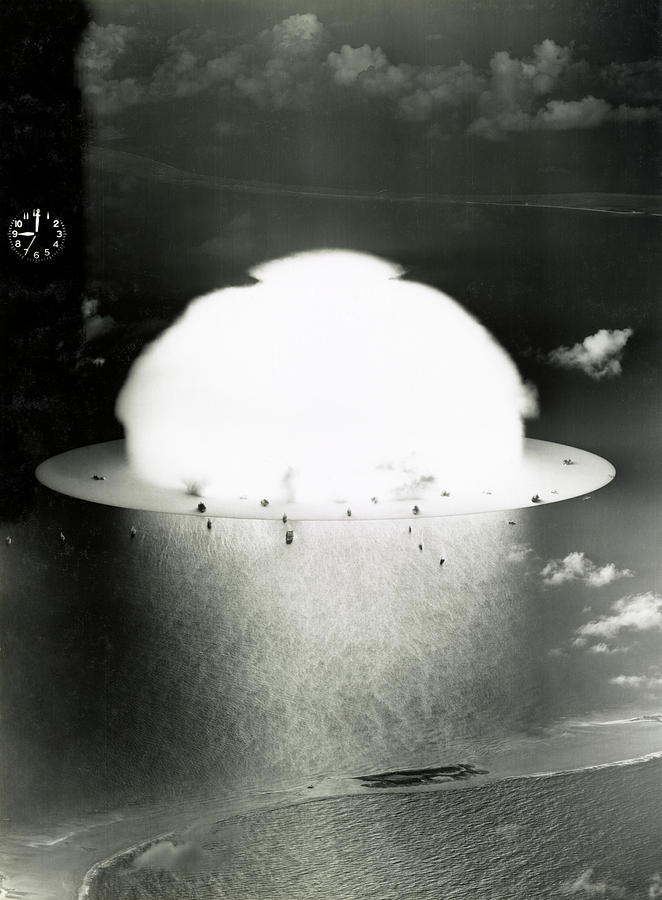
The facility produced tritium for the nation's nuclear arsenal until safety concerns halted production in 1990. Savannah River, South Carolina, became the site for the nation's hydrogen bomb production facility the following year. Truman announced work on the hydrogen bomb was to continue. They made direct approaches to the military and the Joint Committee on Atomic Energy. A group of scientists led by Edward Teller supported its development. However the Cold War was beginning to escalate. Fermi and Rabi wrote, "Since no limit exists to the destructiveness of this weapon, its existence and knowledge of its construction is a danger to humanity as a whole." Robert Oppenheimer, Enrico Fermi, and I.I. Edward Teller, who had explored the idea of a 'super' during the Manhattan Project, supported its development. The scientific community split over the issue of building a hydrogen bomb. While the atomic bombs built during the Manhattan Project used the principle of nuclear fission, the thermonuclear, or hydrogen, bomb was based upon nuclear. There is no limit on the yield of this weapon. In this type of bomb, deuterium and tritium (hydrogen isotopes) are fused into helium, thereby releasing energy. “And even if those observations are made in the coming days, weeks or months, there is still the question of whether the specialists will be able to tell the difference between a fission and a fusion bomb.After the Soviet atomic bomb success, the idea of building a hydrogen bomb received new impetus in the United States. “The radionuclides will only be recorded if there’s leakage from the site and it spreads out and hits a monitoring station,” said Svein Mykkeltveit, a special adviser at Norsar. After the January 2016 test, the sniffer stations failed to detect the signature of an H-bomb, possibly because very little gas leaked from the underground test site. Depending on the wind and other weather conditions, the gases could be detected at stations in South Korea, Japan, Russia and China.Īn answer is not guaranteed though. Hydrogen bombs produce all manner of radioactive elements, but monitors will look specifically for isotopes of a gas called xenon that can bear the hallmark of H-bomb reactions. The best hope for confirming North Korea’s claim of testing a hydrogen bomb comes from sniffer stations around the world that detect radioactive pollution released by nuclear explosions. Those exploded with an energy of 15 to 20 kilotons.Īs well as its more obvious destructive power, a hydrogen bomb could be detonated in the atmosphere to release a massive electromagnetic pulse to knock out electrical devices. If the North Koreans have built a 100 kiloton hydrogen bomb, its explosive power would dwarf that of the US nuclear bombs dropped on Japan in 1945. Photograph: KCNA/EPA Photograph: STR/AFP/Getty Images

Kim Jong-un inspects a device, or perhaps a model of a bomb, in front of a diagram suggesting its size may be small enough to fit into an ICBM.


In images released by North Korea, Kim Jong-un is seen inspecting a device, or perhaps a model of the bomb, in front of a diagram suggesting that it was small enough to fit into the nose cone of an intercontinental ballistic missile.

H-bombs instead fuse hydrogen atoms together to create heavier elements, a process that releases far more energy. Its greater sophistication affords it vastly greater destructive power than first-generation nuclear bombs, a more compact size, a lower mass, or a combination of these benefits. But the fission process is inefficient and the bombs tend to be big and heavy. A Thermonuclear weapon, fusion weapon or hydrogen bomb (H bomb) is a second-generation nuclear weapon design. In conventional atomic bombs, the blast is produced by atoms being ripped in two. Hydrogen bombs can be a lot more powerful than conventional atomic bombs. “From the seismic signal alone it’s not possible to tell the difference between a conventional atomic explosion and a hydrogen bomb, but when it’s as large as this one, the credibility of the claim that it’s an H-bomb increases dramatically,” she said. North Korea’s nuclear test was detected as shockwaves around the worldĪnalysts have been sceptical that the 2016 test involved a hydrogen bomb because the energy released was comparatively small, but the latest test leaves less room for doubt, according to Anne Strømmen Lycke at Norsar, the Norwegian centre responsible for detecting nuclear tests. The bombs dropped on Hiroshima and Nagasaki exploded with the yield of 15 kilotons and 20 kilotons of TNT, respectively, according to the Union of Concerned Scientists.


 0 kommentar(er)
0 kommentar(er)
